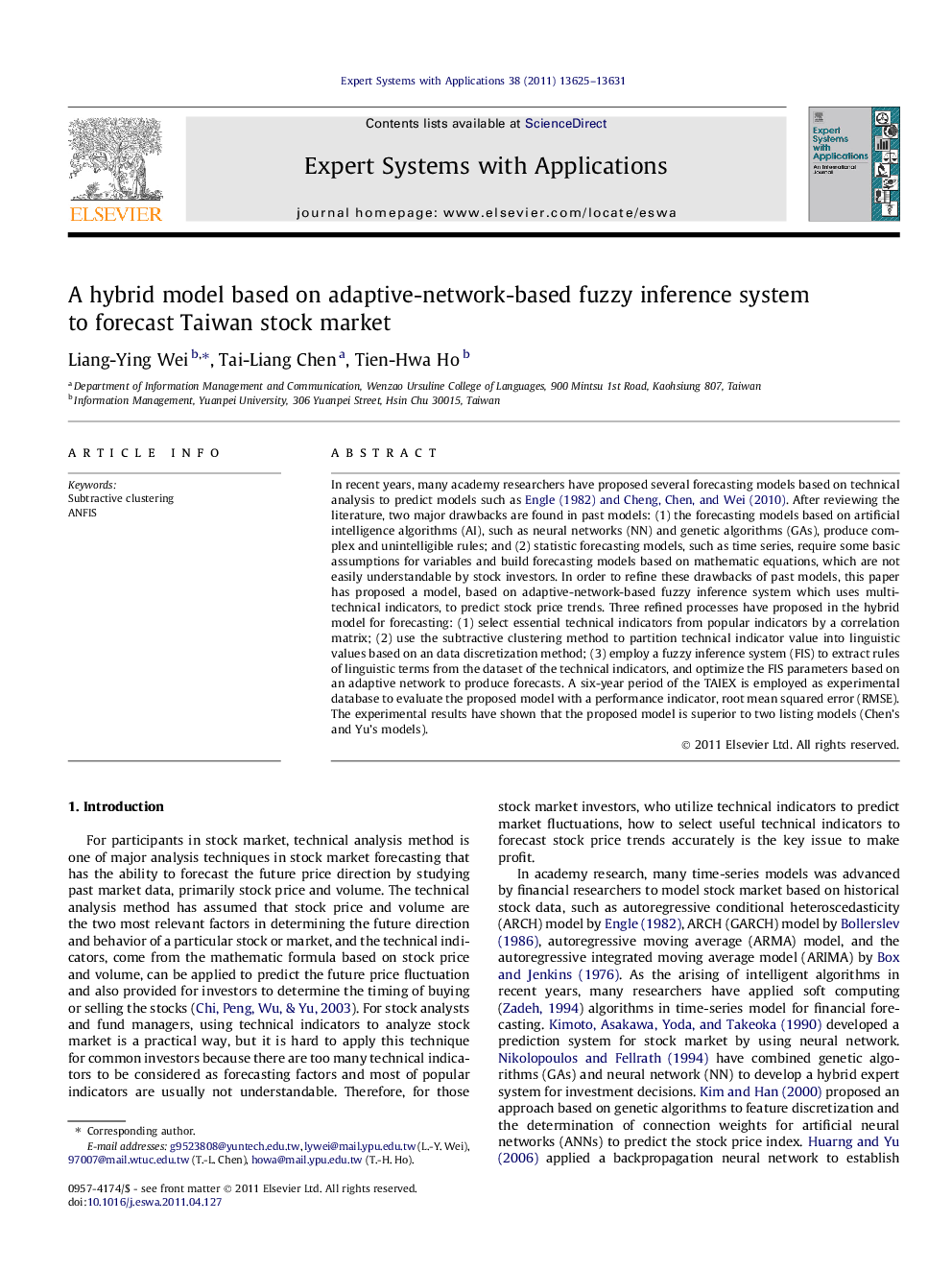| Article ID | Journal | Published Year | Pages | File Type |
|---|---|---|---|---|
| 385363 | Expert Systems with Applications | 2011 | 7 Pages |
In recent years, many academy researchers have proposed several forecasting models based on technical analysis to predict models such as Engle, 1982 and Cheng et al., 2010. After reviewing the literature, two major drawbacks are found in past models: (1) the forecasting models based on artificial intelligence algorithms (AI), such as neural networks (NN) and genetic algorithms (GAs), produce complex and unintelligible rules; and (2) statistic forecasting models, such as time series, require some basic assumptions for variables and build forecasting models based on mathematic equations, which are not easily understandable by stock investors. In order to refine these drawbacks of past models, this paper has proposed a model, based on adaptive-network-based fuzzy inference system which uses multi-technical indicators, to predict stock price trends. Three refined processes have proposed in the hybrid model for forecasting: (1) select essential technical indicators from popular indicators by a correlation matrix; (2) use the subtractive clustering method to partition technical indicator value into linguistic values based on an data discretization method; (3) employ a fuzzy inference system (FIS) to extract rules of linguistic terms from the dataset of the technical indicators, and optimize the FIS parameters based on an adaptive network to produce forecasts. A six-year period of the TAIEX is employed as experimental database to evaluate the proposed model with a performance indicator, root mean squared error (RMSE). The experimental results have shown that the proposed model is superior to two listing models (Chen’s and Yu’s models).
► The proposed model promotes prediction performance in stock market. ► Moreover, forecasting rules generated by the proposed are useful and viable for stock investors, decision makers and future researches. ► Investors can utilize this forecasting model to discover the superior target of investment with benefits in stock market.
